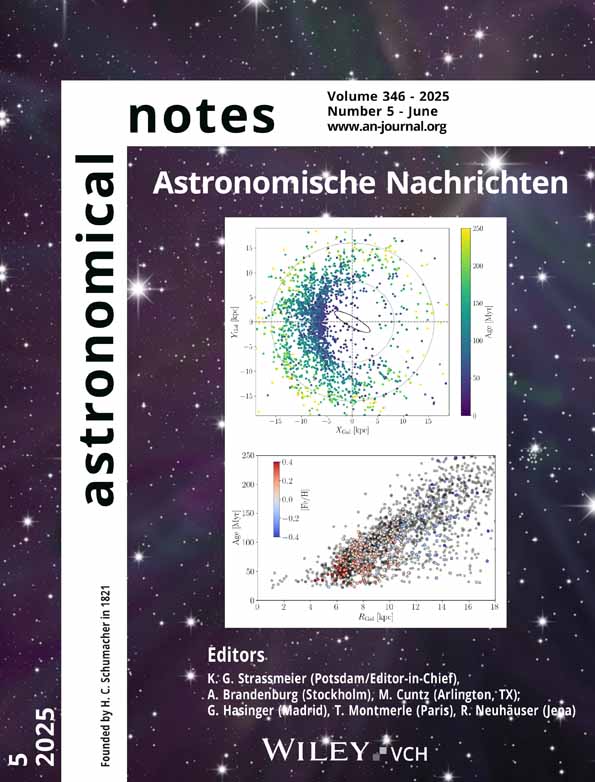Star formation in the LMC: Comparative CCD observations of young stellar populations in two giant molecular clouds
Abstract
This work deals with a CCD imaging study at optical and near-infrared wavelength oftwo giant molecular clouds (plus a control field) in the southern region of the Large Magellanic Cloud, one ofwhich shows multiple signs of star formation, whereas the other does not. The observational data from VLT FORS2 (R band) and NTT SOFI (Ks band) have been analyzed to derive luminosity functions and color-magnitude diagrams. The young stellar content of these two giant molecular clouds is compared and confirmed to be different, in the sense that the apparently “starless” cloud has so far formed only low-luminosity, low-mass stars (fainter than mKs ∽ 16.5 mag, not seen by 2MASS), while the other cloud has formed both faint low-mass and luminous high-mass stars. The surface density excess oflow-luminosity stars (∽2 per square arcmin) in the “starless” cloud with respect to the control field is about 20% whereas the excess is about a factor of 3 in the known star-forming cloud. The difference may be explained theoretically by the gravo-turbulent evolution of giant molecular clouds, one being younger and less centrally concentrated than the other (© 2009 WILEY-VCH Verlag GmbH & Co. KGaA, Weinheim)




